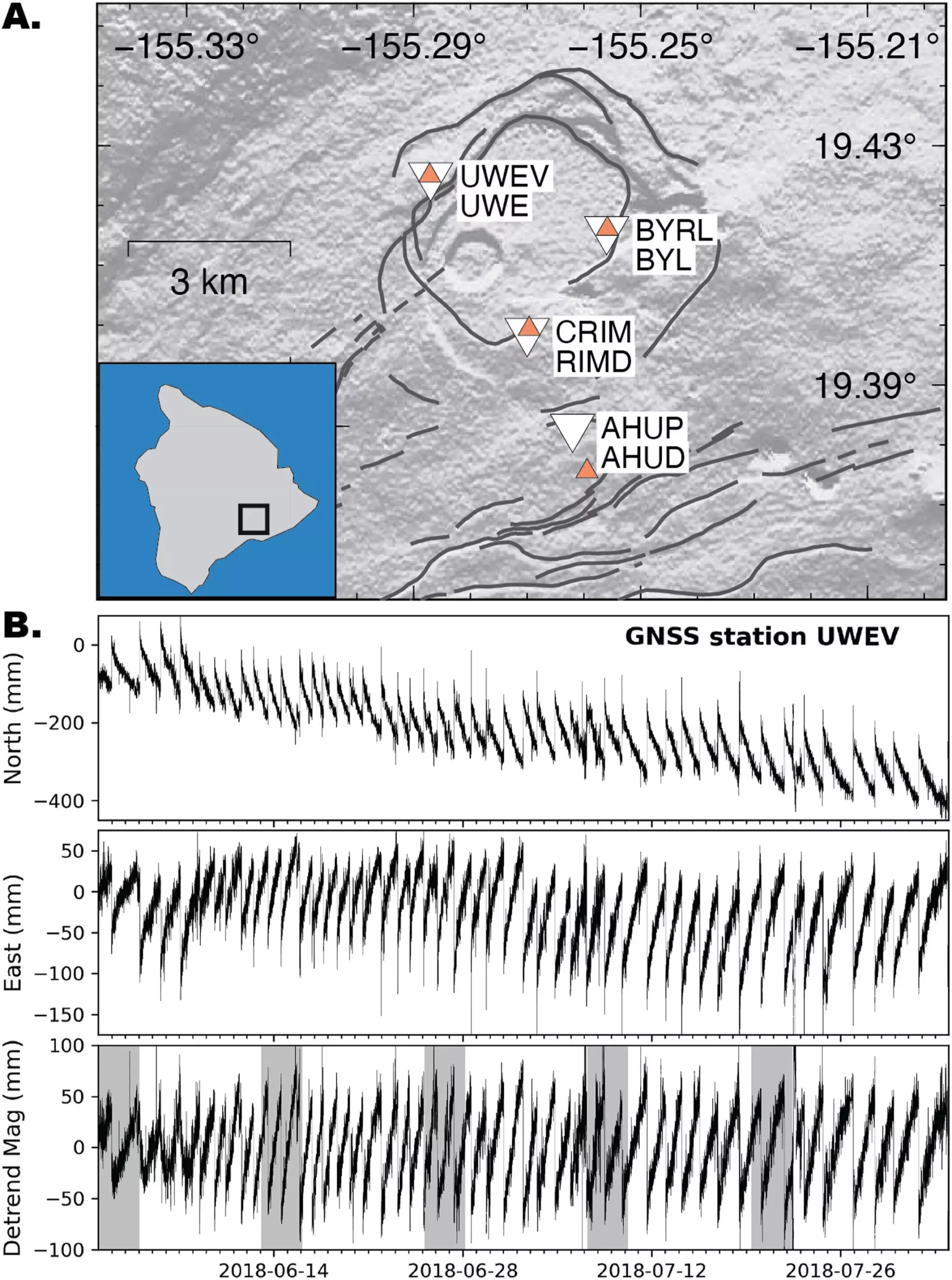Machine learning, a branch of artificial intelligence, has been utilized by a team at Los Alamos National Laboratory to identify the hidden signals that precede earthquakes. This groundbreaking research conducted at the Kīlauea volcano in Hawaii represents a significant advancement in earthquake detection.
The team at Los Alamos National Laboratory focused on identifying signals that precede an earthquake in a stick-slip fault, which has the potential to cause massive destruction. By extracting these signals from seismic data recorded between June 1, 2018, and August 2, 2018, researchers were able to track the loading cycle of each event, providing a deeper understanding of earthquake precursors.
Understanding Fault Physics
One of the key findings of the study was the realization that continuous acoustic or seismic emissions, previously dismissed as noise, contain valuable information about the physical properties of faults. These emissions, which appear as waveforms in recorded data, can now be used to infer characteristics such as displacement, friction, and thickness of faults.
The researchers uncovered highly predictable patterns in the continuous signals emitted by faults, allowing them to determine the current state of the fault and predict when it may experience a slip cycle. This timeline to failure provides critical insights into earthquake hazards and has the potential to revolutionize earthquake prediction methods.
The team successfully applied their machine learning approach to seismogenic faults for the first time, focusing on a series of stick-slip events at the Kīlauea volcano. Through analysis of seismic signals and ground displacement data, researchers were able to estimate the time to the next fault failure, providing valuable information for disaster preparedness.
Challenges and Future Implications
While the application of machine learning to earthquake detection represents a significant advancement, challenges still remain, particularly in predicting highly destructive earthquakes caused by stick-slip faults. Moving forward, continued research in this field is essential for improving the accuracy and reliability of earthquake prediction methods.
Overall, the research conducted at Los Alamos National Laboratory highlights the potential of machine learning in detecting earthquake precursors and understanding the physics of faults. By leveraging artificial intelligence, scientists have made significant strides in earthquake detection and hazard assessment, paving the way for more effective disaster preparedness strategies.


Leave a Reply